





Ranitidine
Application instruction:
 Ranitidine – the antiulcerous drug blocking H2-histamine receptors.
Ranitidine – the antiulcerous drug blocking H2-histamine receptors.
Form of release and structure
Dosage form – tablets, film coated: a round form, biconvex, light orange color (in blisters on 10 таб., 2 blisters in a box cardboard).
Active ingredient: ranitidine (in the form of a hydrochloride) – 150 or 300 mg in 1 tablet.
Auxiliary components: коллидон VA-64, corn starch, silicon dioxide colloid, propylene glycol, polyethyleneglycol 6000, sodium lauryl sulfate, gipromelloz, magnesium stearate, ethyl cellulose, microcrystallic cellulose, titanium dioxide, dye sunset yellow.
Indications to use
- Aggravation of a peptic ulcer of a stomach and 12-perstny gut (treatment and prevention);
- Zollingera-Ellison's syndrome;
- Erosive esophagitis and reflux esophagitis;
- Stomach ulcer and a 12-perstny gut, developed owing to reception of non-steroidal anti-inflammatory drugs (NPVP);
- Postoperative and stressful ulcers of upper parts of digestive tract (treatment and prevention);
- Prevention of a syndrome of Mendelssohn (aspiration of a gastric juice) at operations using the general anesthesia;
- Prevention of a recurrence of bleedings from upper parts of digestive tract.
Contraindications
Absolute:
- Children's age up to 12 years;
- Period of pregnancy and lactation;
- Individual hypersensitivity to Ranitidine components.
Relative:
- Cirrhosis with portosistemny encephalopathy in the anamnesis;
- Liver and/or renal failure;
- Acute porphyria, in the anamnesis including.
Route of administration and dosage
Ranitidine should be accepted inside: to swallow of tablets entirely and to wash down with enough liquid. Meal does not influence efficiency of drug.
The recommended dosages for adults and children are more senior than 12 years depending on indications:
- Peptic ulcer of a stomach and 12-perstny gut: treatment of aggravations – on 150 mg in the morning and in the evening or on 300 mg for the night, is in some cases possible increase in a dose up to 300 mg 2 times a day, a course of treatment – from 4 to 8 weeks; prevention of aggravations – on 150 mg of 1 times a day for the night, to the smoking patients – on 300 mg for the night;
- Peptic ulcer owing to reception of NPVP: treatment – on 150 mg in the morning and in the evening or on 300 mg for the night a course of 8-12 weeks; prevention – on 150 mg in the morning and in the evening;
- Postoperative and stressful ulcers: on 150 mg 2 times a day for 4-8 weeks;
- Zollingera-Ellison's syndrome: on 150 mg 3 times a day, if necessary a dose raise;
- Erosive reflux esophagitis: on 150 mg in the morning and in the evening or on 300 mg for the night, in some cases the doctor can increase a dose to 150 mg 4 times a day, therapy duration – 8-12 weeks. In need of performing long preventive therapy appoint 150 mg 2 times a day;
- Prevention of recurrent bleedings from upper parts of digestive tract: on 150 mg 2 times a day;
- Prevention of a syndrome of Mendelssohn: 150 mg on the eve of operation, then – 150 mg in 2 hours prior to an anesthesia.
At a renal failure (clearance of creatinine less than 50 ml/minute) the daily dose should not exceed 150 mg.
Decrease in a daily dose can be also required by patients with the accompanying abnormal liver functions.
Side effects
- Allergic reactions: bronchospasm, skin rash, small tortoiseshell, acute anaphylaxis, Quincke's edema, multiformny erythema;
- From cardiovascular system: atrioventricular block, bradycardia, lowering of arterial pressure, arrhythmia;
- From a musculoskeletal system: mialgiya, arthralgia;
- From a nervous system: headache, drowsiness, dizziness, increased fatigue; seldom – a sonitus, the involuntary movements, irritability, confusion of consciousness, a hallucination (is more often at elderly people and heavy patients);
- From bodies of a hemopoiesis: hypo - and a marrow aplasia, an agranulocytosis, immune hemolitic anemia, thrombocytopenia, a leukopenia, a pancytopenia;
- From the alimentary system: dryness in a mouth, abdominal pains, a diarrhea/lock, nausea and/or vomiting; seldom – acute pancreatitis, the cholestatic, hepatocellular or mixed hepatitis;
- From endocrine system: amenorrhea, gynecomastia, decrease in a libido, giperprolaktinemiya, impotence;
- From sense bodys: accommodation paresis, illegibility of visual perception;
- Others: giperkreatininemiya, alopecia.
Special instructions
Because Ranitidine can mask the symptoms characteristic of a stomach carcinoma, before its appointment it is necessary to exclude existence of oncology.
During therapy it is recommended to refrain from the use of drinks, food stuffs and medicines which can irritate a mucous membrane of a stomach, and also from driving of the car and performance of potentially dangerous works demanding the speed of psychophysical reactions and special attention.
At the weakened patients at prolonged use of drug in the conditions of a stress bacterial gastric damages with the subsequent spread of an infection are possible.
As well as all H2-gistaminoblokatory, Ranitidine it is not necessary to cancel sharply (there is a risk of development of a syndrome of "ricochet").
In need of simultaneous use blockers histamine H2 receptors need to be accepted in 2 hours after reception of a ketokonazola/itrakonazol, differently perhaps considerable reduction of their absorption.
Ranitidine can increase activity of a glutamattranspeptidaza.
There are separate data that drug can cause bad attacks of a porphyria.
Blockers histamine H2 receptors can counteract influence of a histamine and Pentagastrinum on acid-forming function of a stomach therefore within 24 hours before test they are not recommended to be applied.
During treatment by Ranitidine receiving false positive reaction when conducting test to availability of protein in urine is possible.
As blockers of H2-histamine receptors can suppress skin reaction to a histamine, they should be cancelled before conducting diagnostic skin tests for identification of allergic skin reaction of immediate type.
Medicinal interaction
It is necessary to consider that ranitidine:
- Metabolism in a liver of indirect anticoagulants, antagonists of calcium, Aminophenazonum, glipizid, diazepam, lidocaine, metronidazole, propranolol, phenazone, theophylline, hexobarbital, Buforminum, Aminophyllinum, Phenytoinum oppresses;
- Increases concentration in blood serum and an elimination half-life of a metoprolol;
- Reduces absorption of a ketokonazol and itrakonazol.
Smoking reduces efficiency of ranitidine.
At simultaneous use of drugs which have the oppressing effect on marrow the risk of development of a neutropenia increases.
Antiacid means and сукральфат in high doses can slow down ranitidine absorption therefore between receptions it is necessary to observe at least 2-hour intervals.
Terms and storage conditions
To store in the place, dry, unavailable to children, with observance of temperature condition of 15-30 °C.
Period of validity – 3 years.
Name of drug
Price
Drugstore
Having fallen from a donkey, you more likely will kill yourself, than having fallen from a horse. Only do not try to disprove this statement.
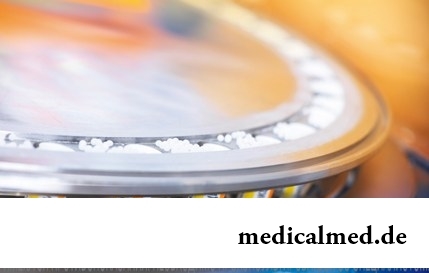
For the help to doctors in the choice of optimal solutions for treatment of various diseases the Cochrane scientific organization (Cochrane) will see off совм...
Section: Articles about health
Partial and the more so full loss of hearing significantly reduces quality of life. Difficulties with communication lead to loneliness and isolation. The person who badly hears experiences difficulties with social and professional implementation, quite often has problems in...
Section: Articles about health
(Xerostomia) many people consider feeling of a xerostomia small and easily removable inconvenience. This delusion: the symptom can demonstrate existence of serious diseases. It is worth to remember also that saliva performs important functions in an organism: clears the surface of teeth of a food plaque, growth of pathogenic microorganisms oppresses, normalizes acid-base balance, liquefies food and helps to split the carbohydrates which are contained in it. Chronic deficit слюн...
Section: Articles about health
The thought that the mass of their body is too big at least once in life visits from 80 to 95% of women. Many...
Section: Articles about health
Practice of use of table salt in the therapeutic purposes contains not one century. Applications which do by means of the fabric impregnated with saline solution are considered especially effective. They possess antibacterial and antiinflammatory эффек...
Section: Articles about health
Deciding to get rid of an addiction, not all imagine what effects it is necessary to face. Process of refusal of smoking causes quite essential discomfort in most of people: differences of mood, a sleep disorder, fatigue, decrease in physical and intellectual activity and a number of other symptoms reducing quality of life. Abstinence can be strong: an essential part of attempts comes to an end leaving off smoking failure, and people are returned to the use of cigars...
Section: Articles about health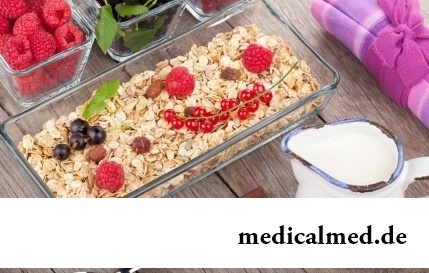
The healthy nutrition is the invariable principle of health and good health for long years of the woman. Nevertheless, in рацио...
Section: Articles about health
For anybody not a secret that the modern person eats not as his ancestors. For the last 100 years in broad access there were absolutely new products which are result of use of the latest technologies in food production. Significantly changed спо...
Section: Articles about health
History of mankind contains several tens of epidemics whose emergence was compared by eyewitnesses and historians to doomsday. The most terrible of them claimed the lives of millions of people, having made even the whole people to the person of the earth. What they − the diseases striking terror? Whether it managed to the person to find treatment, or he is still powerless before forces of nature?...
Section: Articles about health
Several decades ago the basil (the district khan, реан, Reagan) was considered as a part of the Caucasian or east cuisine, but today it is strong for...
Section: Articles about health
All of us, unfortunately, should face flu nearly an every year. It would seem, so frequent disease has to be studied already up and down, and each person, at least once by it had (and the number of such people in our country aims at 100%), a dolzha...
Section: Articles about health
The advantage of swimming for the person is so high that this sport is not only the most popular, but also is widely applied in medicine and rehabilitation processes. If you look for for yourself the occupation allowing pleasantly and to spend time, then swimming with advantage – the fact that it is necessary for you. And give learns several facts about swimming....
Section: Slideshow
The state of health of the person in many respects depends on chemical composition of biological liquids of an organism. Specialists consider that з...
Section: Articles about health
For anybody not a secret that our country is one of the most "drinking" in the world. At clear understanding that the use of hard alcoholic drinks – occupation extremely harmful, most of Russians belong to alcoholism with unjustified loyalty. These...
Section: Articles about health
Almost each of us during life faced dissatisfaction with own body. At such moments, as a rule, we begin to shame ourselves, urgently we go on the most rigid diet promising minus of 10 kg in a week, or we exhaust ourselves in the gym to almost death. As a rule, similar attempts come to an end with a campaign to the refrigerator for jamming of the next stress. Further history repeats itself with individual frequency....
Section: Articles about health
Memory is an ability of the central nervous system to fix, keep and as necessary to reproduce information on knowledge...
Section: Articles about health
The state of health of the person depends on many factors. One of the most important is the constant, but not exhausting a physical activity. In the presence of various illnesses specialists often advise patients to do swimming which by right borrows ведущ...
Section: Articles about health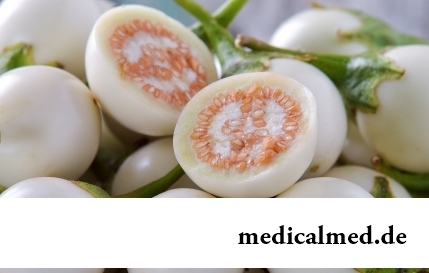
It is possible to find the extensive range of fruit and vegetables in modern shops. Russians already got used that on counters there is not only a seasonal domestic production, but the vegetables and fruit which are grown up in the countries with more comfortable conditions of cultivation at all seasons of the year. However what we see in shops and in the vegetable markets, is only a small part of those edible plants with which the nature is so rich. Today we want to acquaint the reader with rare and very useful vegetables which on...
Section: Articles about health
Coffee - the tonic loved by many for the invigorating aroma and deep taste. Having the stimulating effect, coffee raises ра...
Section: Articles about health
Scientists always aimed to offer fundamental explanations for medical problems. Their theories formed the basis of modern methods of treatment of the hardest pathologies and helped to save a set of lives. However stories are known also such theoretical constructions, following to...
Section: Articles about health
To look healthy and means well-groomed not only to be pleasant to people around, but also to feel strong, sure and taken place. Specialists in the field of cosmetology quite often note that not all women are able to look after face skin. Many women incorrectly apply cosmetics, ineptly use various procedures, without having exact information on their real influence and dividing numerous delusions about it. All this not the best...
Section: Articles about health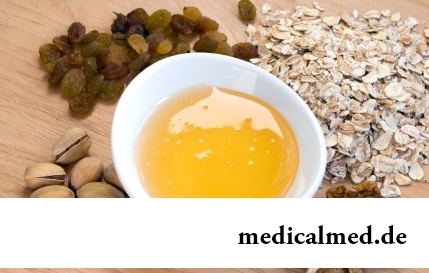
Let's begin with the fact that a separate illness which is called "adjournment of salts", just does not exist. In practice this household name of plank beds...
Section: Articles about health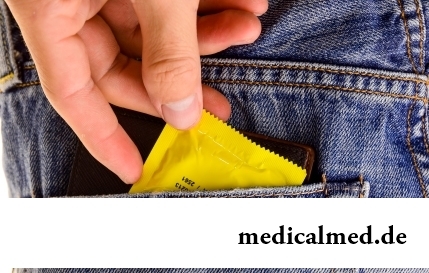
Today about 30 diseases, sexually transmitted are known. Wide circulation of these illnesses is extremely promoted by the dual attitude towards them: on the one hand, most of people know about "shameful" diseases and not a stirrup very little...
Section: Articles about health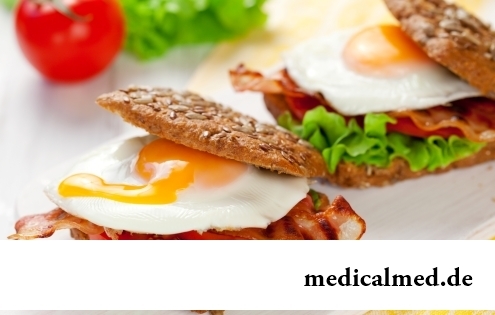
What will only not be thought up by persons interested to have a beautiful figure. Here the last innovation – for weight loss needs to be eaten greasy food. Let's understand whether there is at a fatty diet common sense....
Section: Slideshow
About 10-15 years ago existence of the computer in the apartment of the Russian was considered as a rarity and office rooms were only on перв...
Section: Articles about health
Residents of big cities quite often have a disease which is known as the syndrome of chronic fatigue (SCF) today. This illness affects the people belonging to various social and demographic groups and living on all continents. Most of all SHU to a podverzha...
Section: Articles about health
The medicine promptly develops, and the fact that else quite recently it seemed by miracle can now. We are not surprised any more to the fact that people with artificial joints and extremities can play sports, organ transplantation became a routine, and the latest cancer medicine allowed to achieve reduction of mortality in tens of times. Miracles of plastic surgery thanks to which people in 60 years are in the flower of beauty and freshness, too not a sensation any more....
Section: Articles about health

